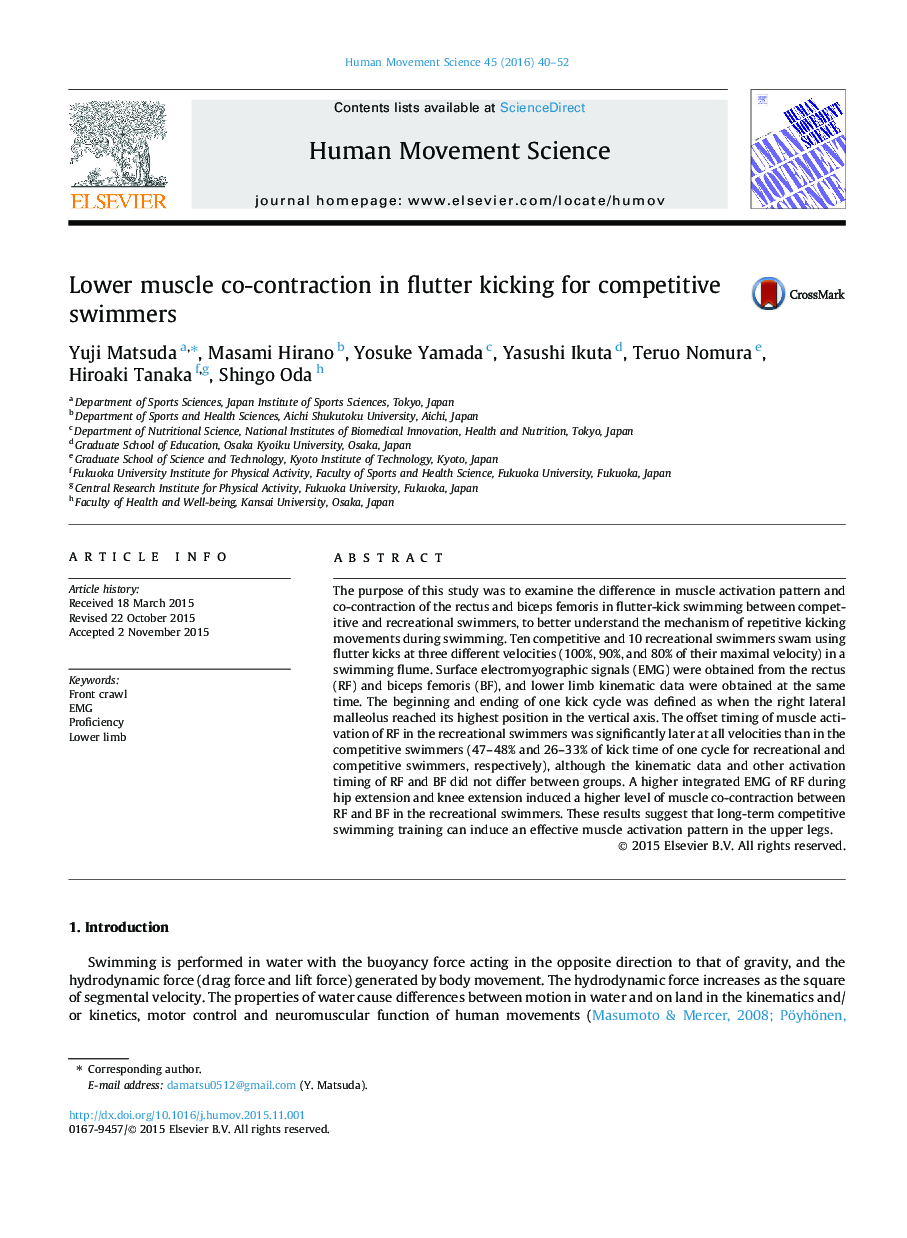| Article ID | Journal | Published Year | Pages | File Type |
|---|---|---|---|---|
| 7291590 | Human Movement Science | 2016 | 13 Pages |
Abstract
The purpose of this study was to examine the difference in muscle activation pattern and co-contraction of the rectus and biceps femoris in flutter-kick swimming between competitive and recreational swimmers, to better understand the mechanism of repetitive kicking movements during swimming. Ten competitive and 10 recreational swimmers swam using flutter kicks at three different velocities (100%, 90%, and 80% of their maximal velocity) in a swimming flume. Surface electromyographic signals (EMG) were obtained from the rectus (RF) and biceps femoris (BF), and lower limb kinematic data were obtained at the same time. The beginning and ending of one kick cycle was defined as when the right lateral malleolus reached its highest position in the vertical axis. The offset timing of muscle activation of RF in the recreational swimmers was significantly later at all velocities than in the competitive swimmers (47-48% and 26-33% of kick time of one cycle for recreational and competitive swimmers, respectively), although the kinematic data and other activation timing of RF and BF did not differ between groups. A higher integrated EMG of RF during hip extension and knee extension induced a higher level of muscle co-contraction between RF and BF in the recreational swimmers. These results suggest that long-term competitive swimming training can induce an effective muscle activation pattern in the upper legs.
Keywords
Related Topics
Life Sciences
Neuroscience
Cognitive Neuroscience
Authors
Yuji Matsuda, Masami Hirano, Yosuke Yamada, Yasushi Ikuta, Teruo Nomura, Hiroaki Tanaka, Shingo Oda,
